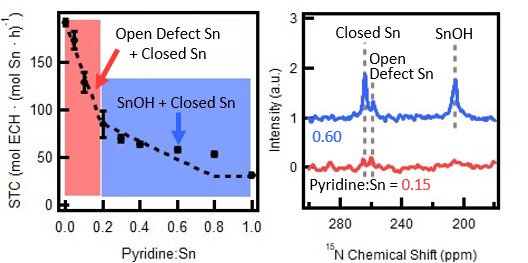Zeolite Sn-Beta is an effective catalyst for many reactions involved in biomass upgrading and fine chemical production, but key questions remain about the nature of its active sites. Three distinct catalytic sites are proposed to exist: closed, hydrolyzed-open, and open-defect sites. There is evidence that these sites have non-equal contributions to the catalysis of a given reaction; therefore, quantifying the sites is important for establishing structure-activity relationships. To quantify sites and determine their catalytic contributions, titration experiments may be performed wherein a Lewis base is added to deactivate a certain fraction of Sn sites before catalytic testing. Though titration experiments are becoming more widespread, challenges remain, including (1) limited investigation of experimental parameters and (2) a limited understanding of how titration occurs on a molecular level. This work addresses these by (a) investigating the impact of titrant and solvent molecules and (b) connecting titration experiment data with results from spectroscopic techniques.
The effects of titrant (triethylamine, pyridine, 2,6-lutidine) and solvent (hexane, dichloromethane) on titration experiment results are investigated using Sn-Beta for epoxide ring opening (ERO) reactions. Pyridine/hexane is identified as a good titrant/solvent combination that distinguishes high-, low-, and no-activity regimes in the titration experiment data. 15N-labeled pyridine/hexane is used to connect titration experiments with 15N NMR. 15N NMR results suggest that pyridine titrates sites as follows: (1) In the high-activity regime, both open-defect and closed Sn sites, then (2) in the low-activity regime, additional closed Sn sites as well as SnOH groups. Based on these results, open-defect sites are identified as the singular high-activity site. Ongoing work will resolve the role of SnOH groups and hydrolyzed-open Sn sites in ERO. Overall, this work highlights titration experiments as an insightful site quantification technique when combined with NMR. Furthermore, the results will help to establish valuable synthesis-structure-activity relationships for Sn-Beta materials.


